The other spring offensive
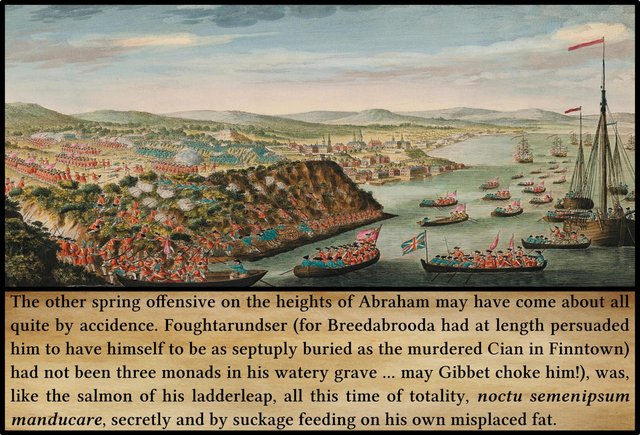
The first five paragraphs of chapter four of James Joyce’s Finnegans Wake describe the death of HCE and his burial in a watery grave at the bottom of Lough Neagh. But in Finnegans Wake, death is always followed by a resurrection of sorts. In the philosophy of Giambattista Vico, history is cyclical and repeats itself. In the sixth paragraph of this chapter we receive our first intimations that HCE’s earlier history is about to be repeated―not by HCE himself but by his sons Shem & Shaun, though distinguishing between these two interpretations of historical events is never an easy matter.
First-Draft Version
As usual, a good place to begin our analysis is with the first draft of this passage, as recorded by David Hayman:
The other spring offensive seems to have been all quite by accident. All conditions were drawn into the conflict, some for lack of proper feeding, others already carving hon[oura]ble careers for themselves and, if emaciated, the person garotted may have suggested whigging or the grand old whig in person when falsesighted by the wouldbe burglar, a tory of the tories, for there circulated pretty clearly the feeling that in so hibernating Earwicker was feeding on his own fat. ―Hayman 75
This brief account clearly continues the allusions to the First World War, which were prominent in the opening paragraphs of this chapter. The German Spring Offensive refers to a series of attacks along the Western Front that commenced on 21 March 1918. Other conflicts would be added when Joyce revised this paragraph, most notably the French and Indian War (1754–63)―which became part of the Seven Years’ War (1756–63)―the American Civil War, the Second Boer War (1899–1902), the religious divide in Ulster, and racial conflicts between blacks and whites. Joyce’s revisions also resulted in a great expansion of the feeding-and-fasting theme, which is present in the first draft.
Having said all that, I cannot claim to understand what Joyce is up to in this first draft. What does he mean by conditions? Who was garotted? Who is the wouldbe burglar?
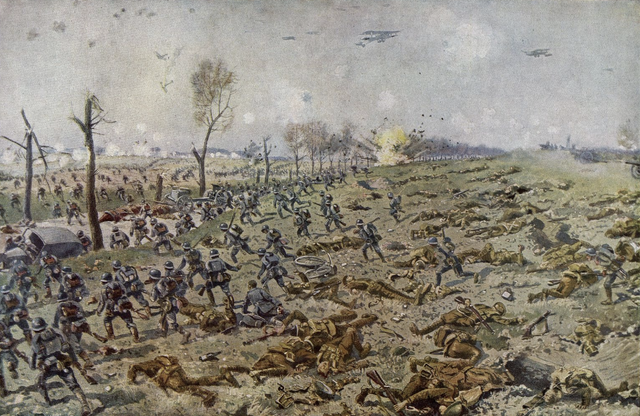
Heights of Abraham
This phrase echoes another phrase from I.2: Ides-of-April
They tell the story ... how one happy-go-gusty Ides-of-April morning ... ages and ages after the alleged misdemeanour when the tried friend of all creation, tiger-wood roadstaff to his stay, was billowing across the wide expanse of our greatest park in his caoutchouc kepi and great belt and hideinsacks and his blaufunx fustian and ironsides jackboots and Bhagafat gaiters and his rubberised inverness he MET a cad with a pipe. ―RFW 027:39–028.08
HCE’s oedipal encounter with the Cad was initially identified as occurring at a specific time: 13 April. Now history repeats itself and the oedipal encounter takes place again, but it is initially identified as occurring at a specific place: the Heights of Abraham.
The Heights of Abraham are better known as the Plains of Abraham. They are to be found in Quebec City in Canada. On 13 September 1759 they were the scene of a critical battle in the Seven Years’ War (or French and Indian War, as the American phase of this conflict is called). At that time the area lay just outside the city walls. The battle was brief―it lasted a mere hour―but it marked the culmination of a three-month siege [three monads] and resulted in the British taking the city. The victorious General Wolfe and the defeated General Montcalm both received fatal wounds in the battle. The city sits on the St Lawrence River, named for the 3rd-century Spanish martyr, but in Finnegans Wake we are frequently reminded that Dublin’s patron saint was another St Laurence, Lorcán Ua Tuathail.
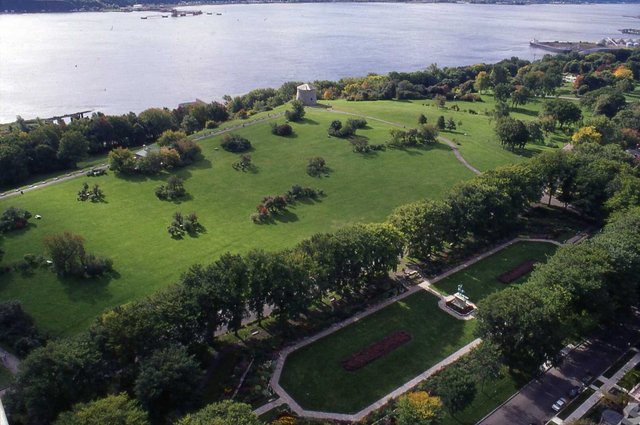
American Civil War
Another important conflict that is alluded to in the final version of this paragraph is the American Civil War. Now Heights of Abraham evokes the President Abraham Lincoln, who, as John Gordon notes, was the leader of a country in which brother fought brother and son fought father:
78.24: “druiven:” McHugh notes that this means “grapes” in Dutch; I suggest, therefore, “grape-shot,” which (as in “a whiff of the grape”) is sometimes simply “grape.” Recalls the pebbles that were earlier thrown against the door of HCE’s dwelling.
78.24: “muskating at the door:” mustering with muskets ... muskets and grapeshot were both weapons of the American Civil War, although the name for the former (increasingly replaced by rifles in the war’s last years) had become somewhat archaic.
78.27-8: “bluemin and pillfaces…had, moor or letts, grant ideas.” Again, American Civil War. Union soldiers wore blue. “Grant ideas:” General Ulysses Grant; grand ideas. Along with “pillfaces” this goes with the black-vs-white theme (in turn part of the Civil War theme) here.
78.28: “with the Pope or on the Pope:” given the capitalization of “Pope,” along with the plethora of allusions to the American Civil War, probably General John Pope, a controversial Union general.
78.30: “the eternals were owlwise on their side every time:” God was always on their side. Many combatants have asserted as much, of course, certainly including the United States, during the Civil War and in every one of its wars for the next hundred or so years.
79.5: “Massa Ewacka:” conventional Southern slave dialect (compare Ulysses 14.1557); goes with American Civil War strain. ―John Gordon’s Finnegans Wake Blog
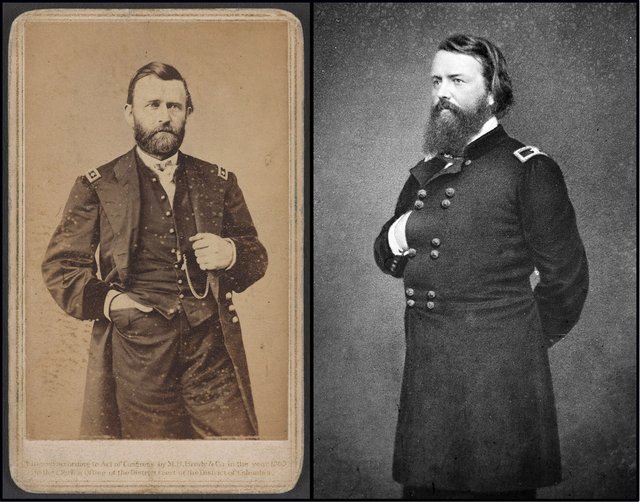
Cian
(for Breedabrooda had at length persuaded him to have himself to be as septuply buried as the murdered Cian in Finntown) ... the plain being involved in darkness ... a tory of the tories ... was, like the salmon of his ladderleap ...
This passage weaves together several strands from Irish history and mythology:
A poem attributed to St. Berchan, about A.D. 690, says that St. Brigid came to Downpatrick at this time to procure that St. Patrick might be buried at Kildare (O’Curry, MS. Materials, p.415). ―William Bullen Morris, The Life of Saint Patrick Apostle of Ireland, Fourth Edition (1890) 264 n1
Breeda is a common Anglicization of the Irish names Brigid and Bríd. There may also be an allusion to Hendrick van Brederode, a Dutch nobleman who played a part in the Dutch Revolt against Spanish rule―the Eighty Years’ War (1566–1648). The L/R Split also gives us Bleda, the brother of Attila the Hun, whose watery grave has been alluded to several times before in this chapter. Attila rose to power after murdering Bleda around 445. Their sibling rivalry will be played out by Shem & Shaun in the rest of this chapter.
Cian was a character in Irish mythology. Balor of the Evil Eye, Fomorian ruler of Tory Island, imprisons his daughter Eithne in a glass tower to prevent her from bearing children―it having been prophesied that Balor would be killed by his own grandson. Cian, however, succeeds in wooing her and she gives birth to Lugh of the Long Arm, who does indeed kill Balor. Cian himself (HCE) is killed by the Three Sons of Tuireann (Shem, Shaun & the Oedipal Figure), who must bury him seven times because the Earth keeps casting him back.
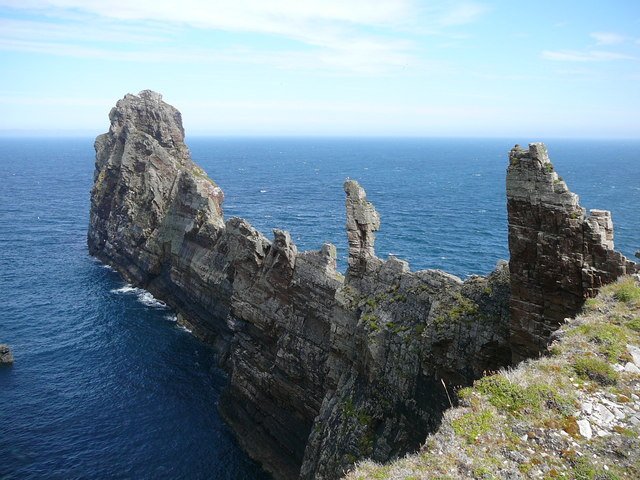
None of these characters was associated with the famous Salmon of Knowledge, but the mention of Finntown reminds us that Finn MacCool was the one who first tasted the Salmon and acquired its wisdom. There are also references in this paragraph to the wisdom of owls (owlwise).
the Druid Luchat Mael challenged the Saint to work wonders before the multitude. In the contest which followed, God allowed the magician to exercise strange and preternatural powers, which turned in the end to his own confusion. By his spells and incantations he brought snow upon the ground up to the men's girdles, and involved the whole plain in darkness, but he could neither remove the snow nor dispel the darkness, both of which disappeared at the prayer of Patrick.
―William Bullen Morris, The Life of Saint Patrick Apostle of Ireland, Fourth Edition (1890) 186
Noah’s Flood
In Finnegans Wake the Biblical Deluge marks the end of a Viconian Cycle. In the opening paragraphs of this chapter, there have been several allusions to Noah’s Flood, and hints that HCE’s coffin is a replica of Noah’s Ark. From the references to Dublin Zoo and Armenia in the opening lines to the transformation of the coffin into a submarine with conning tower and torpedo. Was Joyce thinking of Henrik Ibsen’s sonnet To My Friend the Revolutionary Orator, which was addressed to the Swedish publisher Adolf Hedin:
You say I’ve become a ‛conservative’.
I remain as I was, every day I live.I do not have time for smart moves and bidding.
Just knock the board over―I’m yours, and no kidding.Just one revolution is worth repeating
that wasn’t a matter of half-baked cheating.It robs all the later attempts of their glory.
Of course I refer to the Deluge’s story.Though he was caught, even then, was our Lucifer;
for Noah, you know, got the ship and the use of her.Let’s try it again, but be more categorical;
we’ll need real men, though, not just rhetorical.You fix up a flood to earth’s farthest mark.
I’ll gladly, myself, torpedo the Ark.
―Henrik Ibsen, To my Friend the Revolutionary Orator (Northam 94–95)
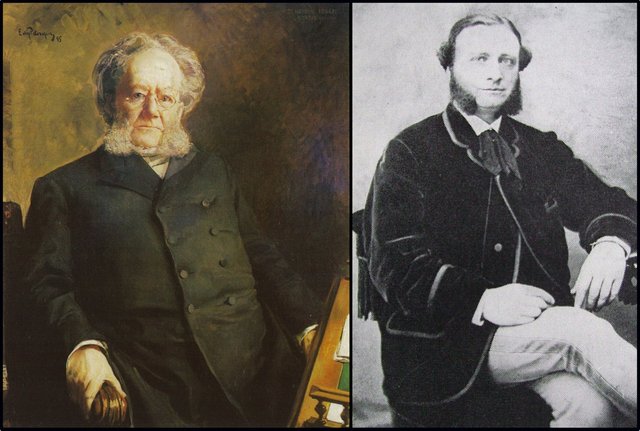
Another Swede, Alfred Nobel, invented dynamite but was no revolutionary.
HCE’s watery grave in Lough Neagh also evokes the Flood. Note the appearance in this paragraph of postglacial lakes (cirque, tarn). Allusions to the abating of the flood waters are also present:
dreyfussed dry-footed after the flood waters have abated. There is also an obvious allusion to the notorious Dreyfus Affair of French politics―another civil conflict.
the boys are parching because there is no more water to drink. Also, Tramp, Tramp, Tramp, the Boys Are Marching, a song that was popular during the American Civil War.
a blessing paper freed the flood The image is of blotting paper being used to soak up the flood waters.
took the ham of Ham, one of Noah’s sons, who repopulated the earth after the Flood.
Concluding Words
This is a difficult paragraph to fully understand, but perhaps no one has explained it better than Adaline Glasheen, who includes the following synopsis in A Third Census of Finnegans Wake:
The public gave HCE a grave, but he reinvented TNT (see Nobel, Noble), blew up the public grave, and built his own grave where he lives in style, supported by public offerings, earth’s riches. It is the dump [behind the Mullingar House in Chapelizod], the treasure howe of “Mutt and Jute”, and it is so valuable that, when North and South (Blue and Gray) are done fighting the American civil war, they combine and come against his “heights of Abraham” (Fenian expedition to Canada). They would plunder the howe because they are unemancipated, starving, and Kate the cook says HCE is a great fish to feed on. As at 7.8—19 [RFW 006.15–23], HCE makes himself scarce. ―Glasheen xxxv
The reader may also find the following synopsis from A Skeleton Key to Finnegans Wake illuminating:
The great wars which follow the death of HCE correspond to the noisy brawl at the wake of Finnegan and the brother battles of the sons. With the death of the Master, chaos supervenes. Throughout this paragraph resound overtones from the American Revolution and Civil War: Heights of Abraham, vigilantes, blessing paper freed from the flood (Emancipation Proclamation), bully on the hill (Bull Run). The Irish Americans who carried forward in these wars their ancient struggle against the Anglo-Saxon are for Joyce representatives of the opposition to HCE (cf. England’s sympathy with the Confederacy). They add to the theme of the brother battle a New World theme―a theme of renewal and rebirth of hope. But Joyce is not sentimental about the actualisation of this hope. The New World letter from Boston, Mass., which we shall encounter on pages 110–111, reveals all the old motifs, alive as ever, beyond the sea. ―Campbell & Robinson 81 fn
And that’s as good a place as any to beach the bark of our tale.
References
- C A Bodelsen, The Red White and Blue: A Footnote to English Literary History, R W Zandvoort (editor), English Studies, Volume 19, Numbers 1–6, Pages 158–164, N V Swets & Zeitlinger, Amsterdam (1937)
- Joseph Campbell, Henry Morton Robinson, A Skeleton Key to Finnegans Wake, Harcourt, Brace and Company, New York (1944)
- Adaline Glasheen, Third Census of Finnegans Wake, University of California Press, Berkeley, California (1977)
- David Hayman, A First-Draft Version of Finnegans Wake, University of Texas Press, Austin, Texas (1963)
- Eugene Jolas & Elliot Paul (editors), transition, Number 3, Shakespeare & Co, Paris (1927)
- James Joyce, Finnegans Wake, The Viking Press, New York (1958, 1966)
- James Joyce, James Joyce: The Complete Works, Pynch (editor), Online (2013)
- Roland McHugh, Annotations to Finnegans Wake, Third Edition, The Johns Hopkins University Press, Baltimore, Maryland (2006)
- John Northam (translator), _Ibsen’s Poems: In Versions by John Northam, Norwegian University Press, Oslo (1986)
- Danis Rose, John O’Hanlon, The Restored Finnegans Wake, Penguin Classics, London (2012)
- William York Tindall, A Reader’s Guide to Finnegans Wake, Farrar, Straus and Giroux, New York (1969)
Image Credits
- The Battle of the Plains of Abraham: Anonymous Engraving, after Hervey Smythe (artist), Library of the Canadian Department of National Defence, Public Domain
- German Spring Offensive: German Troops Cross the Bapaume-Albert Road on 25 March 1918, Ernst Zimmer (artist), Der Krieg 1914/19 in Wort und Bild, Public Domain
- Heights of Abraham (Battlefields Park, Quebec City): Anonymous Photograph, Copyright Unknown, Fair Use
- Ulysses S Grant_-_M.B.Brady%26_Co._National_Photographic_Portrait_Galleries,_No._352_Pennsylvania_Av.,_Washington,D.C.%26_New_York_LCCN2013648326.jpg): Matthew Brady (photographer), Library of Congress, Washington, DC, Public Domain
- John Pope: Anonymous Photography, Library of Congress, Washington, DC, Public Domain
- Dún Balair, Tory Island: © Colin Park (photographer), Geograph, Creative Commons License
- Henrik Ibsen: Eilif Peterssen (artist), National Gallery of Norway, Oslo, Public Domain
- Adolf Hedin: Anonymous Photograph, Erik Lindorm, Gustaf V och hans tid: 1907–1918, Stockholm (1936), Public Domain
Useful Resources
- FWEET
- Jorn Barger: Robotwisdom
- Joyce Tools
- The James Joyce Scholars’ Collection
- FinnegansWiki
- James Joyce Digital Archive
- Finnegans Wake Notes
- John Gordon’s Finnegans Wake Blog
- Joyce Genetic Studies
